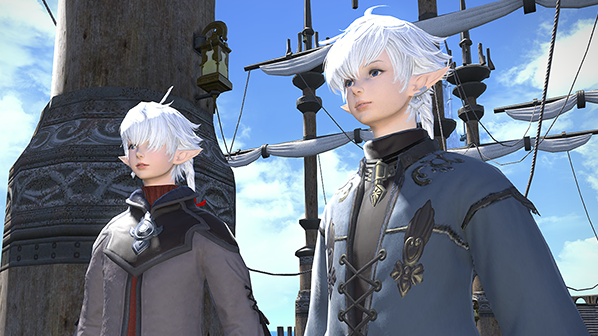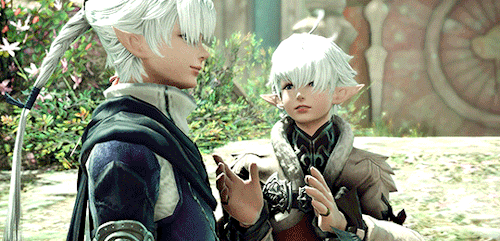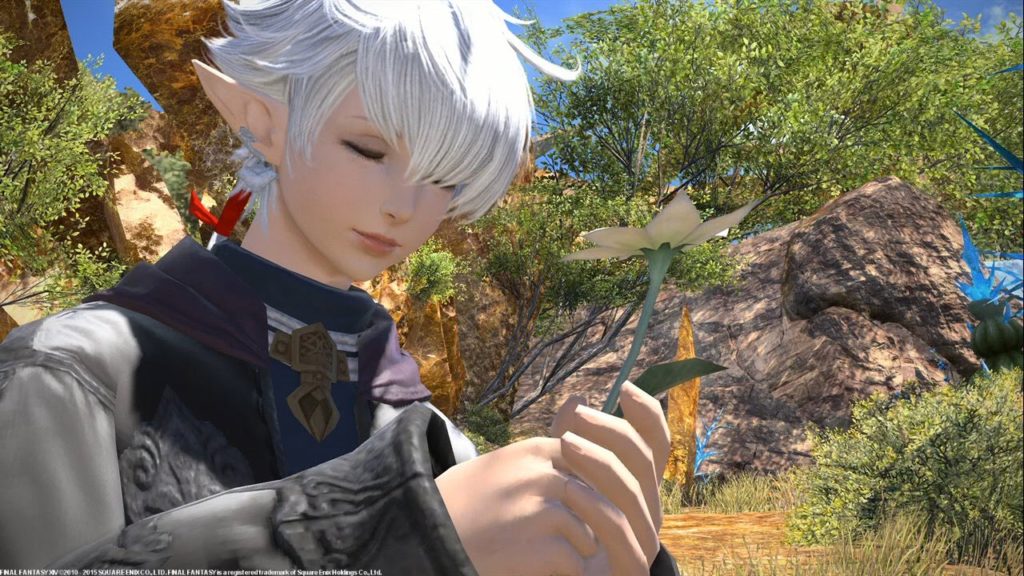
How Final Fantasy XIV Shuns Typical Gender Roles
When you think of siblings in RPGs, what thought first springs to your head? For me, it’s Porom and Palom from Final Fantasy IV, the white and black mage twins that assist Cecil. Siblings tend to fall into a yin and yang trope–similar yet opposites, with traits that simultaneously compliment and put them at odds with one another. There’s always the feeling that while they’re strong on their own, it’s only together that they’re at their best.
But dig deeper into that trope, and you start to see other patterns. While support could take a number of forms, in a fantasy setting these family members almost always take the same roles. Men are swordsmen and warriors, running headfirst into battle. Women will take more of a support role, typically a healer–someone needs to patch up their reckless brother, after all.
These tropes are firmly entrenched in gender roles. While characters can often break out of their trope based roles individually, when we see characters as a “set” (like siblings or twins), this suddenly becomes much harder. The bonds of family bind them to their roles, ensuring they hit all the average plot points and character growth while also winding out the party with their respective skills.
Final Fantasy XIV, however, works to break all of these typical roles, and as a result provides two of the strongest characters I’ve seen in most narratives, let alone an RPG. Alphinaud and Alisaie are introduced early in the MMO. They join the Scions of the Seventh Dawn to help combat the threats against Eorzea–or so it seems. The twins quickly have a disagreement as to the best method to do that, and Alisaie leaves for the better part of 100 hours, barely present in the main plot until after Heavensward.

The inseparable twins are quickly separated, and as a result, the two go through character development arcs that aren’t entangled in one another. Alisaie and Alphinaud are often shown not as two siblings acting as one unit but has two people who grow in different ways. This conscious decision to have Alisaie leave early on, only to reappear in full after the events of Heavensward, allows both to break free of the trope-y writing that plagues sibling relationships.
This is most apparent in how the twins ditch their typical gender roles. As you learn after the main quest and throughout Heavensward, Aphinaud’s strengths lie in diplomacy and strategy. While he fights, the boy takes more of a support role as an Arcanist, healing and having Carbuncle fight in his stead. He is also naive, a fact he has to deal with throughout Heavensward when his actions and naivety cost lives.
Alphinaud is no brute. He does not rush headlong into battle, like most young men of his ilk. He’s generally calm, though not devoid of emotion. He tends to take a ‘womanly’ role in the party dynamic–supporting, healing, and generally being the voice of reason in tense scenarios.
When Alisaie reenters the main story, she appears to still be the same as her brother, although perhaps a smidge more cynical. However, we quickly learn that Alisaie isn’t an Arcanist, but a Red Mage. While still a magic user like Alphinaud, Alisaie uses her magic to make a literal sword and get up close and personal with her enemies.
Alisaie’s personality matches her fighting style. Throughout Stormblood, we spend more time with the previously estranged twin. Alisaie is far more blunt than her brother, without his diplomatic tact. While not naive like Alphinaud, she’s very stubborn, which leads to its own issues. She runs headlong into battle, and Alisaie believes her strength is her greatest asset, even if she gets hurt as a result.

Magic or not, Alisaie is a brutish warrior without all the muscles. She, like her brother, is small and slender, and certainly doesn’t look the role of a big, manly warrior. Still, it’s shown time and time again that she’s able to fight and defeat some of the most powerful antagonists. It’s not a common personality for many women in fantasy settings, and even less so for a character bound to the typical tropes of a sibling relationship. It’s a refreshing dynamic to see.
On top of that, Alphinaud and Alisaie are at the front and center of the FFXIV storyline. One or both of them are always with you on your adventures, and their presence is definitely missed the few times they’re absent. All the better, then, that the twins are wonderfully written characters, breaking free from the restrictive tropes are so easy to fall into.
Having two well-written characters at the forefront of FFXIV really is a testament to the plot itself, as the twins aren’t forced into typical writing holes or sexualized. It makes Alisaie and Alphinaud more believable as a result, and their character development more genuine. Instead of characters bound by their family ties or gender roles, we have two unique companions that go through their own unique tribulations, separate from each other and oftentimes even separate from the main character, even as they’re entwined with the main plot.






Alisaie’s robe in your screenshots is black. But when I finished Coil, her robe was white. Do you know the reason for this?
I rewatched the carriage cutscene and her robe was black like in your screenshots, so the color only changed for coil. I just realized that I haven’t check it in heavensward!